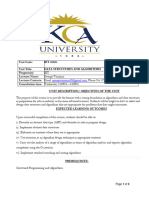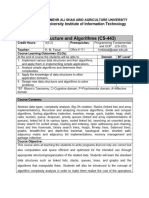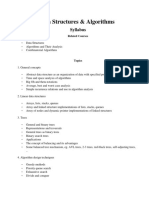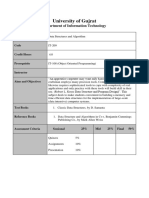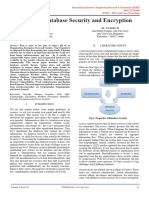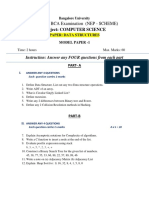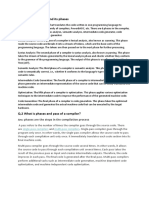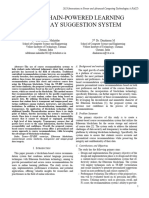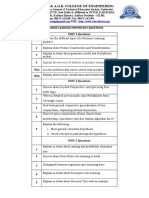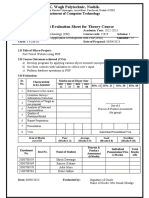0% found this document useful (0 votes)
64 views9 pagesDSA Syllabus
The course on Data Structures and Algorithms spans 14-16 weeks and requires basic programming knowledge and an understanding of mathematics. It covers core concepts, algorithm analysis, and practical applications through various modules including arrays, linked lists, trees, graphs, and dynamic programming. Assessments include assignments, quizzes, projects, and exams to evaluate students' understanding and application of DSA principles.
Uploaded by
garef83192Copyright
© © All Rights Reserved
We take content rights seriously. If you suspect this is your content, claim it here.
Available Formats
Download as PDF, TXT or read online on Scribd
0% found this document useful (0 votes)
64 views9 pagesDSA Syllabus
The course on Data Structures and Algorithms spans 14-16 weeks and requires basic programming knowledge and an understanding of mathematics. It covers core concepts, algorithm analysis, and practical applications through various modules including arrays, linked lists, trees, graphs, and dynamic programming. Assessments include assignments, quizzes, projects, and exams to evaluate students' understanding and application of DSA principles.
Uploaded by
garef83192Copyright
© © All Rights Reserved
We take content rights seriously. If you suspect this is your content, claim it here.
Available Formats
Download as PDF, TXT or read online on Scribd
/ 9


















































